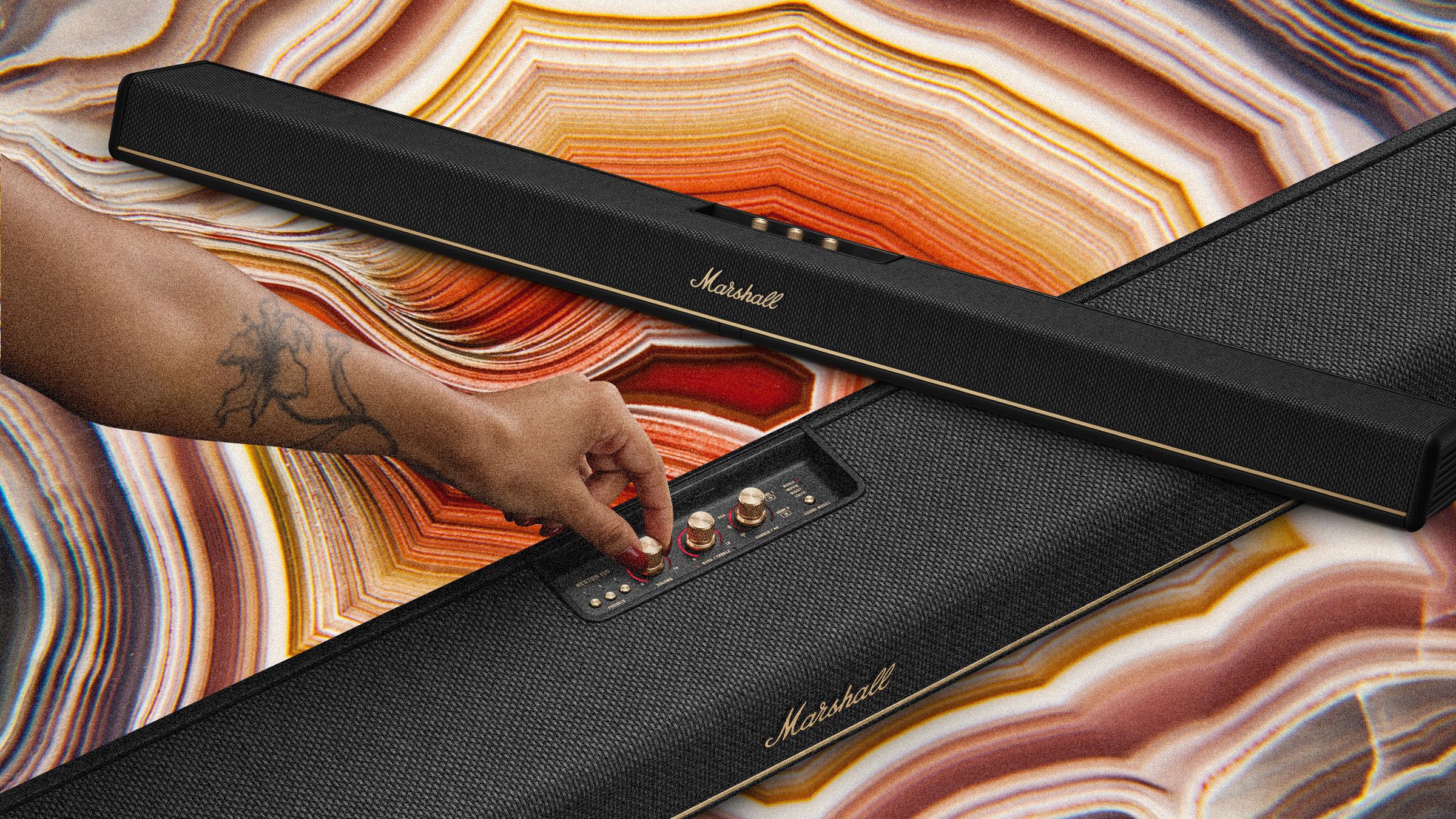All products featured on WIRED are independently selected by our editors. However, we may receive compensation from retailers and/or from purchases of products through these links.
Moving into a new product category is a nervy undertaking for any company, and the current climate of tariff roulette only adds another level of uncertainty. But Marshall, manufacturer of iconic guitar amps and a growing portfolio of wireless speakers and headphones, is marching on regardless, with the launch of its first soundbar. And at $1000, the Atmos-capable Heston 120 is an ambitious first entry.
“This is our most expensive product. And honestly, that’s a little bit scary,” Gustaf Rosell, Marshall’s chief product and innovation officer, tells WIRED in an interview. “But since it’s a new segment for us, we made the decision that we wanted to start at the high end. We don’t always do that, but in this case we thought it was important to make a statement—to show that we are really serious about it.
The idea of adding a soundbar to its line up is one that has been kicking around company discussions for the past five years, Rosell says, but been in production for about three of them. The result is the Heston 120, a 5.1.2-channel Atmos and DTS X soundbar, with 11 separate drivers positioned to offer a wide and high soundfield from a single box.
Tuning a product for so many channels has been a new challenge for Marshall, and it brought new expertise on board to help—even pulling in talent from the automotive industry for their multi-channel experience. “Right now we have two PhDs in house, it’s that level of competence,” Rosell adds. “We also worked really closely with Dolby to help us with some difficult measurements, to ensure that we are placing objects of sound accurately in a room.”
The Heston 120 leans into Marshall’s recognizable product design language, borrowed from its guitar amps.
Courtesy of Marshall
However, a particular focus for the sound team, Rosell tells us, has been about getting the balance right between sounding good for TV and also good for music—a common difficulty for multi-channel audio products. The Heston 120 certainly comes with plenty of music options to put it to the test, including AirPlay 2, Googlecast, and Bluetooth LE, plus Tidal and Spotify Connect.
“Music playback is an area where we have been able to lean into our current expertise, and use some of the modelling from our portable speakers to ensure all of the drivers in the Heston 120 are working just as well together in a more classical stereo setup too. And if I’m to be a little bit bold, we’ve beaten everything we’ve heard from competitors. It’s one of the things I am most proud of with this product.”
Another key focus for the team was the product’s design, but not perhaps in the way that anyone familiar with Marshall products might think. While its speakers are well known for their distinct look, reminiscent of the brand’s famous amplifiers, Heston 120 dials back that approach, just a bit.
“Many products in this area look pretty much the same, they’re trying to blend in, and when TVs are doing their best to hide themselves more and more, you do need to find the right tone.
“But Heston is a conscious design choice for people who want something different—we are not trying to hide. It’s a bold statement, but not as bold as we could have been. I think we’ve found a balance that feels authentic.”
Rosell is under no illusion that Heston is launching into a busy, and competitive space. He concedes that the Heston 120 is not aimed at audiophiles who might want a more involved setup, but believes it can compete with the big names at its premium price point.
“We benchmarked against the Sonos Arc Ultra, against Sennheiser, against Sony, even against Devialet—I mean it’s a lot more expensive, but we really wanted to match it and I think we are doing in most areas, despite the price difference.” Does Heston represents a step up in performance for Marshall, and how it is positioning itself in the market, we ask? “Yes I would say so,” Rosell replies. “We have a lot of respect for Sonos, particularly in how it has managed to push the lower frequencies without having something huge in size. But we think can be on par—even better in certain ways. I think the bass performance we have in Heston will surprise people.”
The Heston 120 is built around getting the most out of a single box. Rosell says he has heard the frustration from customers about how complex some soundbar setups have got now, and that he believes that Marshall customers are looking for performance, but with simplicity. With Heston, ease of use was important, which kept the brand focused on the one-box design.
The Heston 120 has two HDMI inputs (one eARC), an RCA in, sub out and an ethernet connection if you don’t want to use wi-fi.
Courtesy of Marshall
However, that isn’t to say there isn’t more in the pipeline from the company, for those who want it. The company plans to release a smaller soundbar, the Heston 60, and a wireless subwoofer, the Heston Sub 200, later on this year, plus it is exploring the possibility of adding satellite speakers too—and not just from Marshall’s product catalogue.
“We have been very keen from early on about using Bluetooth LE {Low Energy} and Auracast,” adds Rosell. “That opens up the possibility for customers to use other compatible products—like subwoofer or satellites—to add to their experience. So yes, the ambition is that you can use something like Acton or one of our portable speakers as satellite speakers, or even products from other brands too, depending on how the technology is implemented.
“We are not for building proprietary environments when there is a good open standard available. That’s the way we think things should go, and it’s something we’re interested to experiment with.”
The Marshall Heston 120 can be pre-ordered on the company’s website today and will be available from June 3. The rest of the Heston family will follow later this year, with release dates still to be confirmed.




